
July 2008
- 2008-2009 Buyer's Guide
- Apparel Testing: How Little We Know
- Fall Protection: Trasportaion Sector Solutions
- Safe Fluid Transfer
Click here to subscribe.
Features
By Eliana Moriarty
It used to be that bird infestations were frustrating simply because they forced facility managers to waste money cleaning up after a renewable source of mess. Today, we have to deal with the threat of lawsuits, as well as the day-to-day expense of bird infestation problems.
By Robert Zuiderveld
Several highly publicized explosions and fires in the refining and fuel storage industries have resulted from vapor leaks followed by ignition. Heavily regulated by governments throughout the world, refineries and similar energy industries have a responsibility to ensure any explosion risk is kept to a minimum.
By Megan Torgrude, MPH, Don Garvey
Heat stress can be a major concern in workplace environments, potentially causing irritability, low morale, absenteeism, shortcuts in procedures, and unsafe behavior. In extreme cases, heat stress, in the form of heat stroke, can be fatal. The United States Bureau of Labor Statistics data for the years 2003-2005 indicate an average of 31 worker deaths annually from exposure to “environmental heat.”
By Linda J. Sherrard
Respiratory protection is a complex topic.One of the more vague elements of it is making sure the employee really understands the training provided so that he/she can use the respirator as designed for personal protection.
By Dr. James P. Zeigler
The selection of any protective garment is complicated and carries the potential for serious consequences should the decision prove to be incorrect or the selection in any way inadequate. For this reason, standards bodies, vendors, customers, and workers are engaged -- often in the pages of this very magazine -- in ongoing conversations to determine the appropriate levels of protection for a given task.
By Chuck Haffenden
Any motor carrier’s best defense against an unsatisfactory safety rating from the Federal Motor Carrier Safety Administration (FMCSA), and possibly even a carrier compliance review, is a good proactive program for complying with the Federal Motor Carrier Safety Regulations. A winning strategy for motor carrier management regulatory compliance has two components:

By OH&S Staff
Experience vs. youth is one way to view the contest between John McCain and Barack Obama, and how they differ becomes clear when weighing these two presidential contenders' views and potential impact on workplace safety and health. Very few votes or sponsored bills exist to tell us where Obama stands on safety, health, and environmental issues, but this is not true of McCain, who was first elected to the Senate in 1986.
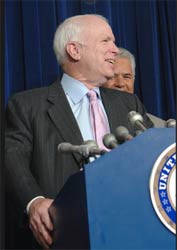
By Ronnie Rittenberry, Jerry Laws
Experience vs. youth is one way to view the contest between John McCain and Barack Obama, and how they differ becomes clear when weighing these two presidential contenders' views and potential impact on workplace safety and health. Both have drifted closer to centrist stances in the final days of the race. Very few votes or sponsored bills exist to tell us where Obama stands on safety, health, and environmental issues, but this is not true of McCain, who was first elected to the Senate in 1986. His label as a "maverick" Republican is accurate.
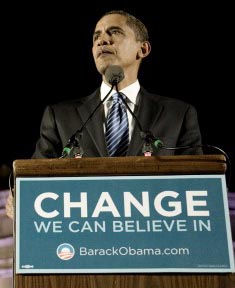
By Marc Barrera
Regarding worker safety and health, there's not a lot of voting history to speak of with Sen. Barack Obama, which is understandable since he is still in his first term as a U.S senator. Thus far, his chief connection to workplace safety and health has to do with his support for and from labor unions, which have a long history of effective advocacy for workers' safety and well-being on the job. The law that created OSHA and NIOSH was signed during a Republican administration, but Democratic presidents have tended to do more in terms of enacting new safety and health regulations. (It's fair to say many safety professionals seem to agree that old regulations should be updated without undue delay but don't desire new regs.)
By Karen D. Hamel
Fluids are essential to most manufacturing processes. They arrive in containers, drums, totes, bulk shipments, and pipelines. When all is going well, they seem to be the lifeblood of the facility. When they leak or spill, however, the mess they create can range anywhere from being a nuisance to being a health and environmental liability.
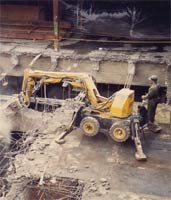
Best practices keep demolition's dangers to a minimum.
By Michael R. Taylor, CAE
Although the prevailing perception is that the demolition industry by its very nature is a dangerous business, the truth is that the industry’s continued commitment to safety education and best practices is creating a relatively safe industry in which to work.
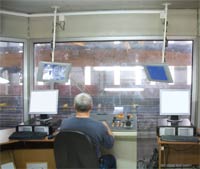
By Stephen V. Magyar, Jr., MBA, CSP
The objective of any ergonomics program is to ensure that work areas and/or jobs that produce musculoskeletal injuries are identified, evaluated, and made more “worker friendly.” The procedures for selecting work areas and/or jobs for review are not new; however, they are precise and do produce results—fewer injuries, fewer employee complaints, and productivity improvements.
By Jim Boerger, PE
The key to high-speed industrial door safety is understanding what you need and when you need it.
By Barry Nelson
Currently, much thought and discussion are being given to leading indicators in the world of safety. Everyone is drawn to the promise of getting ahead or seeing the potential for injury before it is realized. Only recently has technology evolved to the point where we can start to review leading indicators in real time, providing safety professionals with a new perspective and suite of tools from which to work. This article will provide some common working definitions and then explain how you can begin to use two leading indicators—at no cost—that may help you achieve your injury reduction goals.
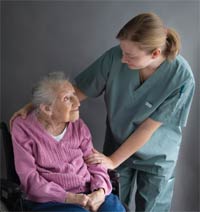
It has long been recognized that back injuries account for a disproportionate share of worker’s compensation dollars paid in permanent disability, in questionable worker’s compensation claims, and in litigated cases. OSHA has not developed specific standards, in large part because individual susceptibility factors (age, physical health, pre-existing conditions, etc.) makes a one-size-fits-all standard impossible.
By Dan Ryan
Veolia Water North America, the nation’s largest services provider for municipal and industrial water and wastewater systems and facilities, takes safety very seriously. Our company understands not only the impact safety has on our bottom line, but also its impact on our employees’ morale and ability to go home to their families the way they left them. From 2000 to 2005, the organization saw its safety performance level off with little or no improvement, year over year.
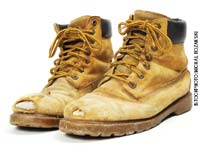
By Linda J. Sherrard
That’s a clever use of duct tape, I thought, but it’s not reasonable for work boots. The employee wore a pair of dry, rotted-leather safety shoes that were being held together with duct tape, and he was trying to make it to payday. I’ve seen other employees who have purchased used safety shoes that had been worn down, causing uneven foot surfaces or treads that could potentially cause a fall. I’ve also seen the super-discount safety shoes, which are hard to walk in and extremely heavy.
Departments
It's not enough to assume a fresh workforce, even if eager, will magically divine the safest ways to do new jobs.
By Robert Pater
How can you make a first step solid? Ergonomically, starting up a new site is the best time to institute new design interventions. Put the desired tools and workstation setups into place up front, rather than playing catch-up later. Similarly, this is true for setting desired behaviors.
By Matt Forck, ASP, JLW
You may be thinking, “I’m not in sales, I’m a safety professional!” You’re half right: You are a safety professional. The Truth — as we often learn the hard way — is that if we are in safety, we are indeed in sales. The fact of the matter is that we are at the mercy of our ability to sell, no matter how “tight” the presentation. Regardless of our education or the facts surrounding an issue, we are still in a position where we have to make the sale in order for a positive change to take place. And the better we are at selling, the greater our results.
By Jerry Laws
Quite a few federal agency leaders will be looking for work six months from now, but some are still contributing. Two, HHS Secretary Michael Leavitt and FDA Commissioner Dr.Andrew von Eschenbach, visited Chinese health officials in Beijing and Shanghai two months ago, arriving soon after the disastrous earthquake, to discuss product safety cooperation. Both men are scheduled to moderate panels at ANSI’s July 9 Import Safety Summit in Washington, D.C.
By Marc Barrera
A bull rider charges into the arena, his heals dug in, one arm outstretched, the other holding on for dear life as he does his best to stay atop his ride. He counts down the seconds until a horn signals time is up, then must take a leap of faith off his bull, entrusting his safety and health to the bullfighters watching his back.
By Ronnie Rittenberry
The importance of a good lock is oft overlooked but cannot be overstated. As author/philosopher Ayn Rand saw it, the very concept of civilization can be thought of as progress toward a society of privacy, a notion that is pretty much the fountainhead of the Health Insurance Portability and Accountability Act (HIPAA), a.k.a. the Privacy Rule.
By Linda J. Sherrard
If you want it done, involve safety. As anyone in the safety profession knows, we are super-busy and constantly asked to take on new responsibilities. Why? Because we work through any obstacles and get the job done! Safety folks are organized, focused, overworked, and get our jobs done with less than enough financial backing. We are creative team players.